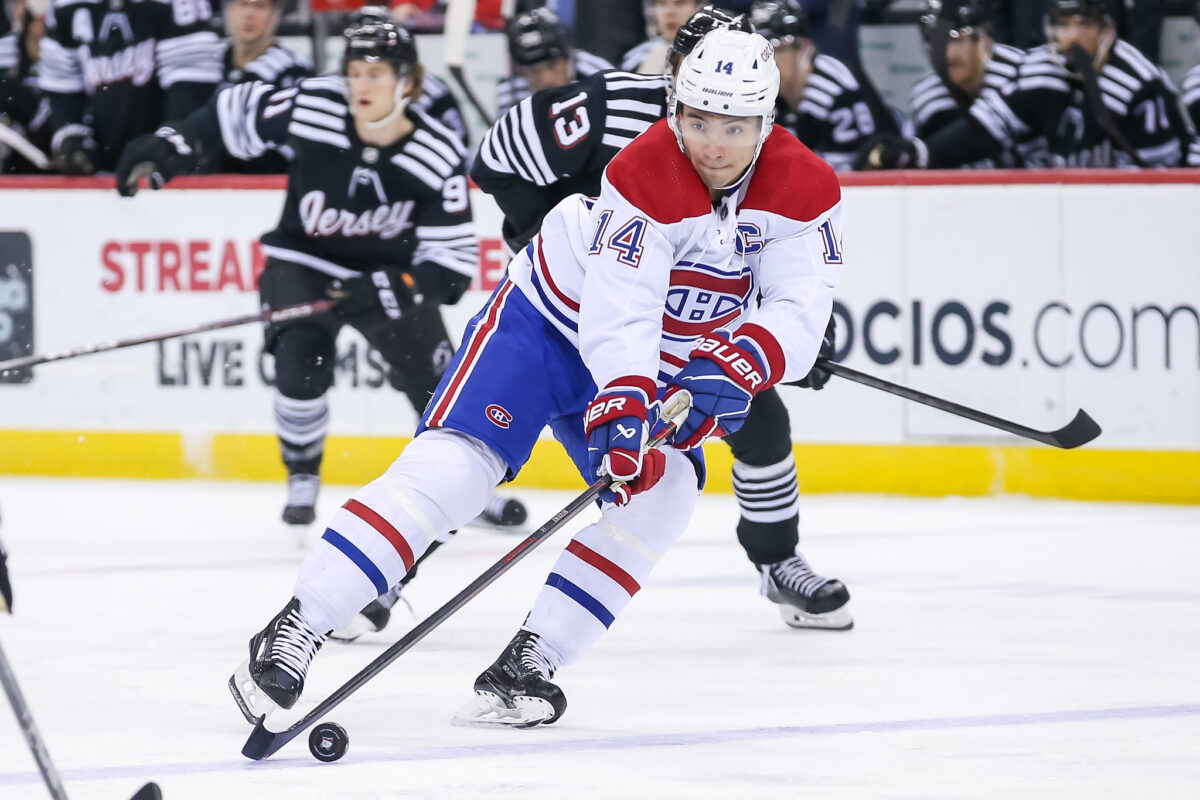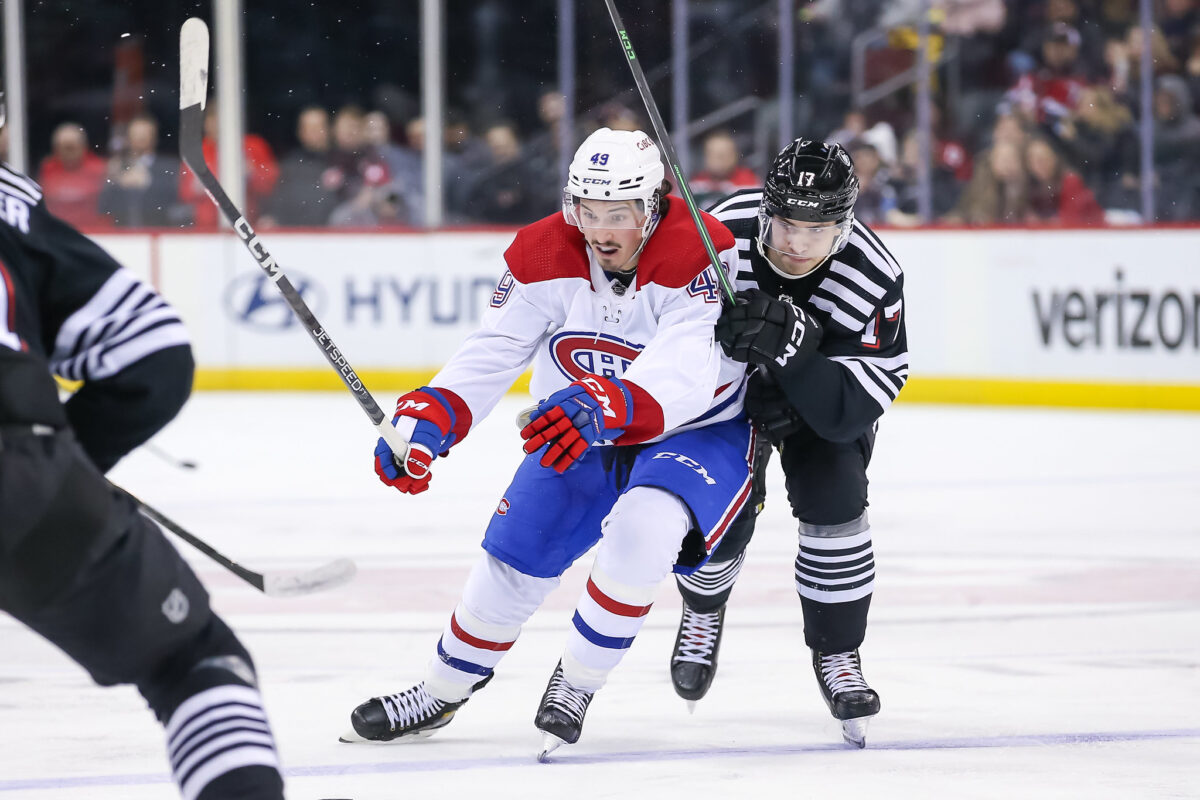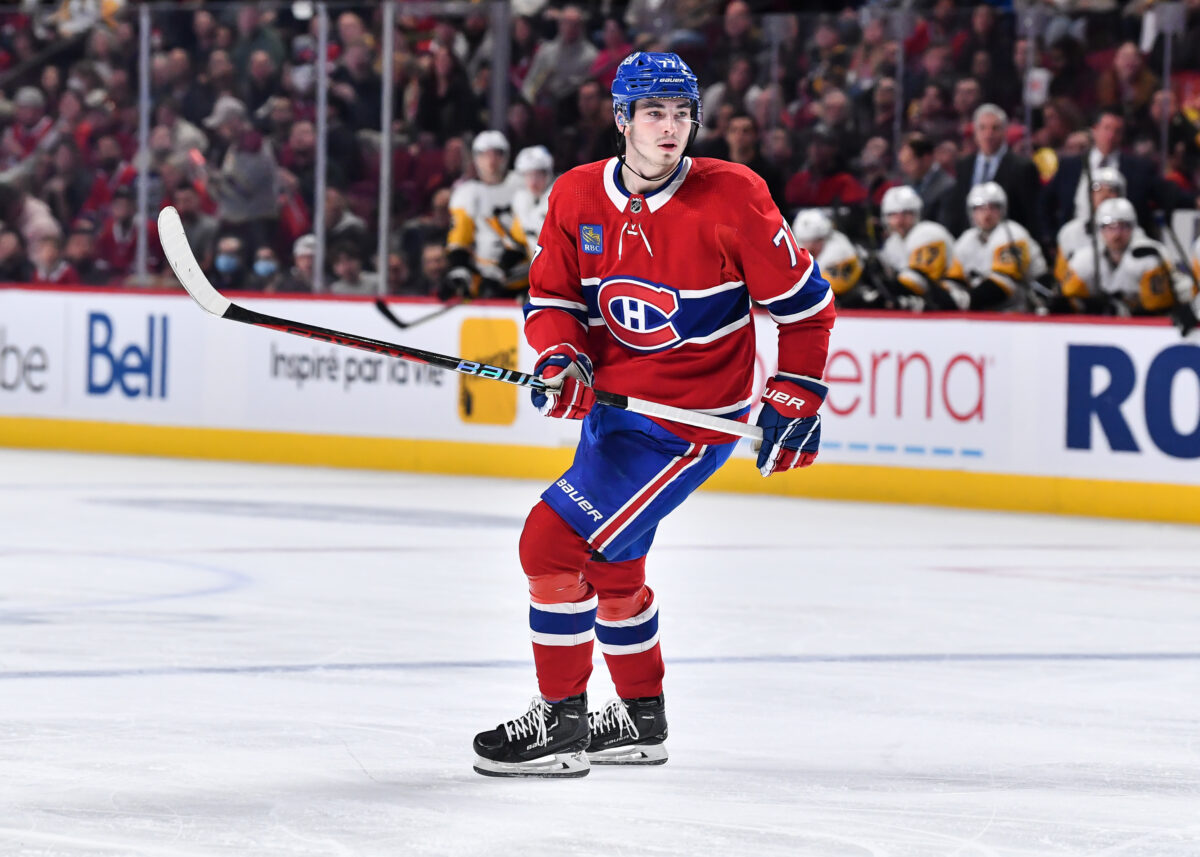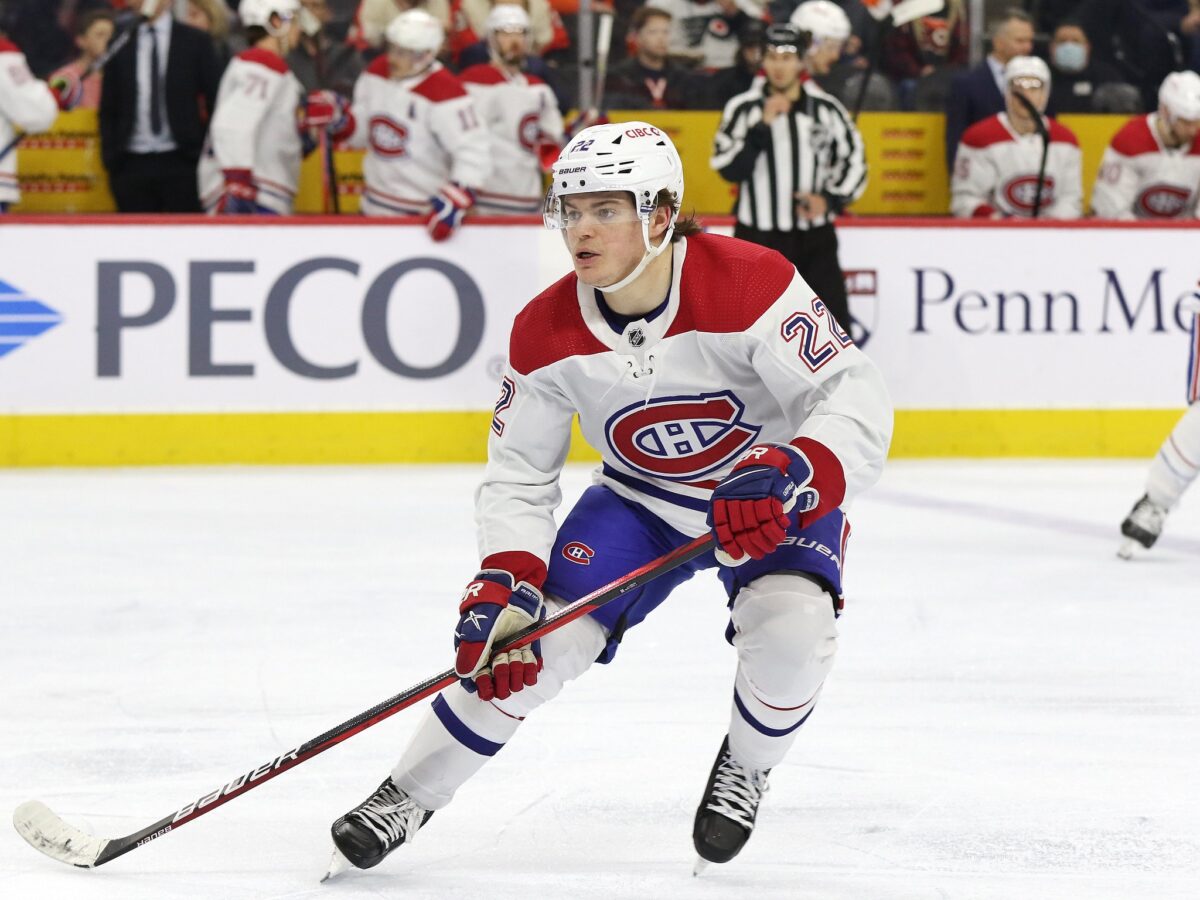You’d probably find it hard to boil the dynamic between Montreal Canadiens forwards Nick Suzuki and Cole Caufield down to a single expression. If you had to, “if it ain’t broke, don’t fix it” might work best, though.

The irony is Caufield did technically get “broke” last January, suffering a season-ending shoulder injury. That obviously forced the Canadiens to try out other wingers on the left wing of Suzuki, the Habs’ resident ironman. And, to Rafael Harvey-Pinard’s credit, the rookie delivered fairly successfully, with a ninth-ranked 14 goals (among all first-year players), despite playing just 34 games.
Caufield vs. Harvey-Pinard
However, now that Caufield is presumably healthy? Any suggestion Harvey-Pinard should stay on the top line in his place is rife with just about as many holes in the team’s injury-riddled lineup to end last season. Of course, to be fair, the idea does have its proponents for a reason.

After all, you’d ideally want to spread the offensive wealth around as much as possible. The problem is, as much as there is a logjam up front, with as many as 16 forwards potentially vying for NHL spots (admittedly including Lias Andersson and Sean Farrell), the sad fact is the Canadiens don’t have much game-breaking talent.
So, splitting up your two most offensively dynamic players would be akin to splitting up peanut butter and jelly. It’s not really done, or at least it shouldn’t be done in principle. That’s an especially apt comparison for the simple reason they don’t necessarily have the bread to complement them.
Related: Likeliest Contracts Canadiens Bury in AHL in 2023-24
Ever since Caufield established himself as a full-time NHLer in 2021-22, Suzuki has been his only center for all intents and purposes. All on its own, that’s not a good reason to keep the duo together, only an illustration that there’s a method to the supposed madness in so doing.
If you were to split them up, you’d effectively be expecting Suzuki to carry a line on his own. True, that’s in fact what Suzuki did when Caufield went down or rather what he was forced to do. However, because the Canadiens just finished fifth from last, it’s hard to argue the experiment worked, in spite of the relatively impressive scoring prowess Harvey-Pinard displayed.
Enter Kirby Dach
The simple fact is Harvey-Pinard is not realistically a first-line winger, all due respect to him and what he accomplished last season. He did however prove himself capable in a top-six role, but the only way that really works is if it’s Kirby Dach doing the centering on the second line. As it happens, that’s arguably no longer the likeliest option.

After Sean Monahan unexpectedly re-signed things changed. Obviously, Dach had been acquired to fill the role of second-line center. Monahan’s emergence as a legitimate secondary scorer down the middle opened the door for the Canadiens to delay Dach’s development as such. And, logically, the primary reason to re-sign Monahan is to play him in the position he was most effective last season (before he got injured himself last December).
That means in turn, the Canadiens are likely to play Dach on the wing, which far from coincidentally was where he found the most success… specifically beside Caufield and Suzuki. That isn’t to say Dach didn’t find success at center. He did. If you take away his lack of success at taking faceoffs, he pretty much flourished, to the point the Habs probably should seriously consider putting him back at center just for his long-term development.
However, you don’t really re-sign a center in Monahan, who successfully established himself as a center on the team, unless that’s the plan moving forward. You probably don’t also trade for Alex Newhook, another center, unless you’re looking for a redundancy at the position for once Monahan presumably moves on as an unrestricted free agent next summer.
The Case to Keep Caufield and Suzuki Together
All that to say, the case to split up Suzuki and Caufield probably hinges on two primary arguments. Firstly, you shouldn’t really want your first line featuring two players well below 6-foot (at 5-foot-11 and 5-foot-7 in the cases of the former two).
However, replace Caufield with Harvey-Pinard (5-foot-9) as the likeliest substitute and that argument gets blown out of the water. And, really, based on the players who lined up as left wingers last season, Harvey-Pinard really is the only potential substitute (unless you’re looking to suddenly promote Juraj Slafkovsky, who has a lot more to prove, to the top line).

The second argument is how Dach (6-foot-4) maybe suits Caufield better as a center based on their difference in size and the former’s playmaking ability. And that’s undeniably true, which is why Dach makes sense both on paper and in practice as that top line’s third member, the bread to his and Suzuki’s peanut butter and jelly, if you will. And, since, as pointed out earlier, Monahan probably takes that second-line center spot anyway, it’s moot.
There’s definitely an argument Suzuki and Caufield alone don’t work. However, once you add in Dach, the trio becomes a legitimate top line in the NHL. All the stats suggest that’s the case. The Monahan re-signing meanwhile suggests the Canadiens want to at least compete for a playoff spot. Through that lens, especially since Monahan worked on that second line, there’s no reason to suddenly drop Dach down instead, taking away the chemistry he Suzuki and Caufield showed as a unit in the process.
The injuries of (the) last (few) season(s) show nothing is guaranteed to last. Caufield obviously didn’t end last season playing with Suzuki. He ended it on the shelf. So, there will be a need to adapt to changing circumstances during a situation as fluid as an NHL season. So, Caufield and Suzuki (and Dach) are far from guaranteed to stay unbroken the length of an entire campaign. Until cracks start to show though, why mess with a good thing? One of the few good things the Canadiens had going for them last season, no less.
